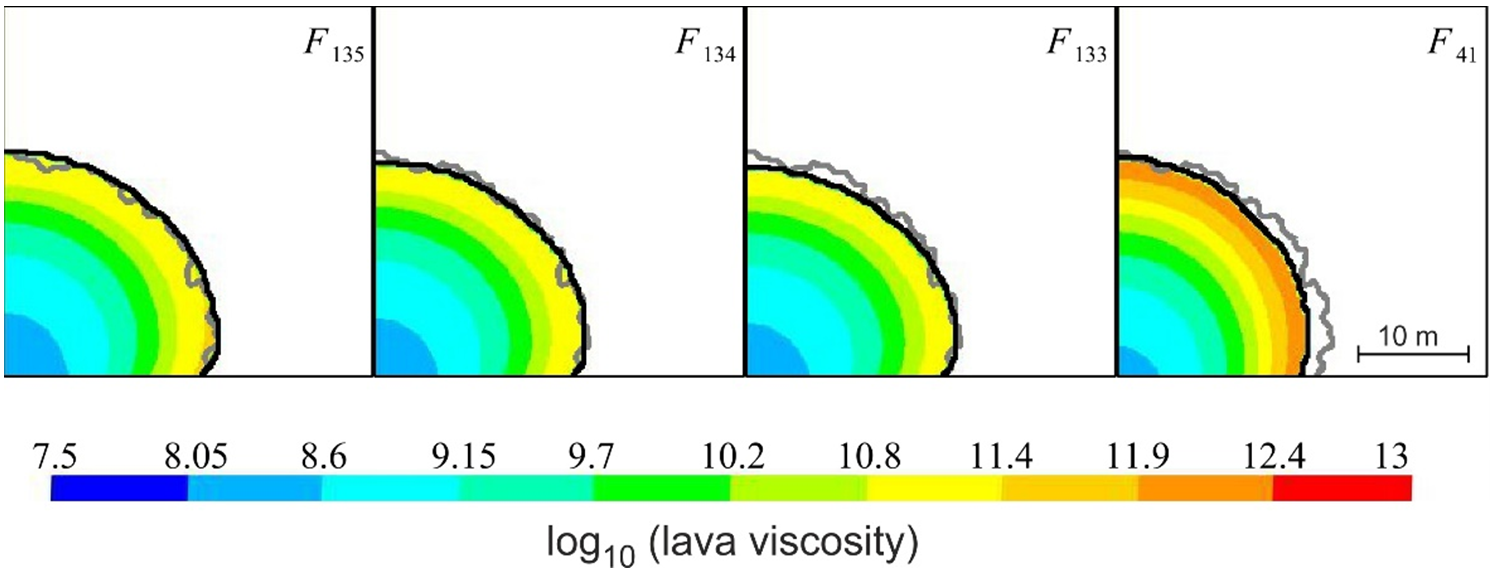Lava domes form when a highly viscous magma erupts on the surface. Several types of lava dome morphology can be distinguished depending on the flow rate and the rheology of magma: obelisks, lava lobes, and endogenic structures. The viscosity of magma nonlinearly depends on the volume fraction of crystals and temperature. The paper “A method for magma viscosity assessment by lava dome morphology” published in the Journal of Volcanology and Seismology (Q2; JIF: 0.543) presents a new approach to magma viscosity estimation based on a comparison of observed and simulated dome morphological forms of lava domes. This joint research was performed by scientists from the Institute as well as from the Institute of Mathematics and Mechanics of the Ural Branch of the Russian Academy of Sciences, and the Lomonosov Moscow State University and supported by the Russian Science Foundation (Project No. 19-17-00027).
We consider a two-dimensional axisymmetric model of magma extrusion on the surface and lava dome evolution, and assume that the lava viscosity depends only on the volume fraction of crystals. The crystallization is associated with a growth of the liquidus temperature due to the volatile loss from the magma, and it is determined by the characteristic time of crystal content growth (CCGT) and the discharge rate. Lava domes are modeled using a finite-volume method implemented in Ansys Fluent software for various CCGTs and volcanic vent sizes. For a selected eruption duration a set of morphological shapes of domes (shapes of the interface between lava dome and air) is obtained. Lava dome shapes modeled this way are compared with the observed shape of the lava dome (synthesized in the study by a random modification of one of the calculated shapes).

To estimate magma viscosity, the deviation between the observed dome shape and the simulated dome shapes is assessed by three functionals: the symmetric difference, the peak signal-to-noise ratio, and the structural similarity index measure. These functionals are often used in the computer vision and in image processing. Although each functional allows to determine the best fit between the modeled and observed shapes of lava dome, the functional based on the structural similarity index measure performs it better. The viscosity of the observed dome can be then approximated by the viscosity of the modeled dome, which shape fits best the shape of the observed dome.
Source: Starodubtseva, Y.V., Starodubtsev, I.S., Ismail-Zadeh, A.T. et al. A Method for Magma Viscosity Assessment by Lava Dome Morphology. J. Volcanolog. Seismol. 15, 159–168 (2021). DOI: 10.1134/S0742046321030064 (this is an Open Access article).

